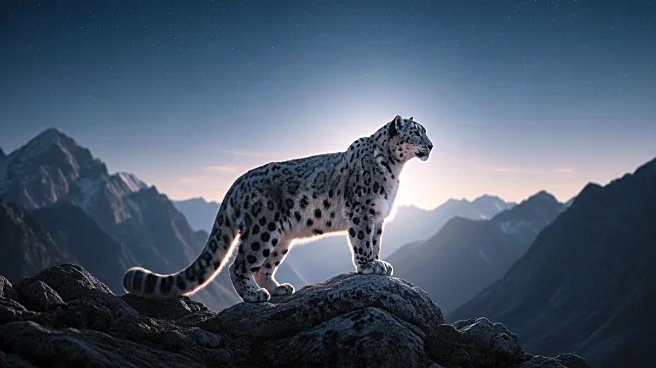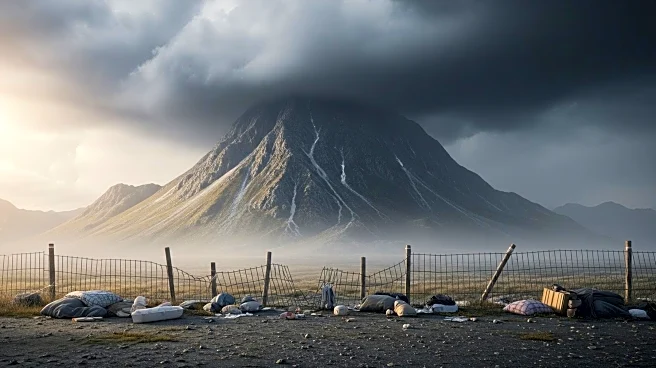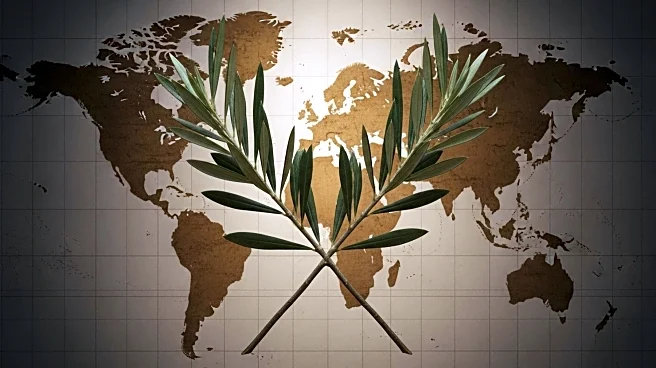What is the story about?
What's Happening?
Researchers have raised concerns about the future survival of snow leopard populations, citing their low genetic diversity as a significant risk factor. A study published in the Proceedings of the National Academy of Sciences highlights that snow leopards, which inhabit arid, mountainous regions in countries like Russia, Afghanistan, Nepal, Pakistan, and Tibet, have evolved with low genetic diversity, making them vulnerable to environmental changes. The study involved genome sequencing of 41 snow leopards, revealing that their genetic diversity is even lower than that of cheetahs, another big cat species with similar issues. This lack of diversity could hinder their ability to adapt to changes, particularly global warming, potentially leading to extinction.
Why It's Important?
The findings underscore the critical need for conservation efforts focused on preserving the snow leopard's habitat and genetic diversity. With an estimated 4,000 to 6,500 individuals left in the wild, primarily in Central and South Asia, snow leopards are listed as 'vulnerable' by the International Union for Conservation of Nature. The study suggests that any environmental changes, such as warmer temperatures, could severely impact their survival. Conservationists and policymakers may need to prioritize strategies that mitigate climate change effects and protect these habitats to prevent further decline in snow leopard populations.
What's Next?
The research team plans to analyze more samples from snow leopards across their geographic range to better understand population dynamics. This could inform future conservation strategies and help identify areas where intervention is most needed. Additionally, the study may prompt discussions among environmental groups and governments about implementing measures to safeguard the snow leopard's habitat against climate change and human encroachment.
Beyond the Headlines
The study highlights the broader implications of genetic diversity in wildlife conservation. It raises ethical questions about human responsibility in preserving biodiversity and the potential consequences of failing to address climate change. The snow leopard's plight could serve as a case study for other species facing similar challenges, emphasizing the need for global cooperation in conservation efforts.
AI Generated Content
Do you find this article useful?















